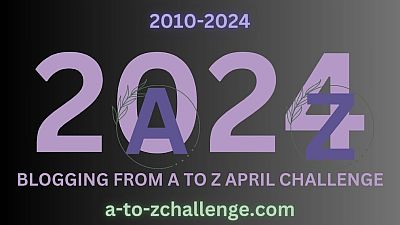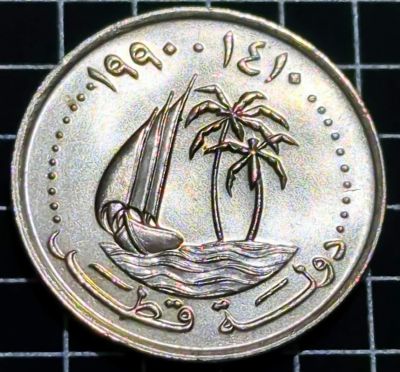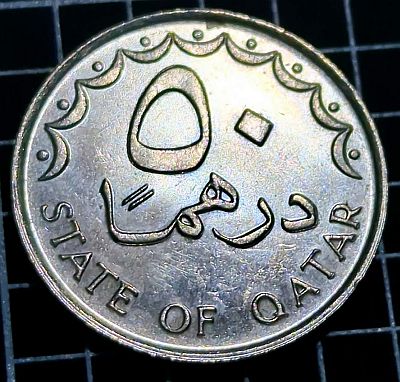A coin featuring one of the most relaxing looking state emblems
This is my entry for Day 17, “Q” of the Blogging from A-Z April Challenge!
Q = Qatar.

Obverse

The obverse of the coin features the year above, in Gregorian and Islamic years (1990 – 1410) and the country name in Arabic below (دولَة قطَر, which translates as “State of Qatar”). The centre is a sailboat and palm trees with small waves below. While a calming image on its own, it is in fact, the State Emblem of Qatar.
The State Emblem has changed since this coin was issued, however these elements appear on both the newer and older versions.
Qatar is a small country which juts out from the coast of Saudi Arabia into the Persian Gulf, hence the imagery of a boat and a tropical island. Can you think of a country with a more relaxing emblem? Do share in the comments!
Reverse

The reverse features the value and country in Arabic, with the country “State of Qatar” below in English.
Qatar
Although part of the Ottoman Empire, in 1868 Sheikh Mohammed bin Thani signs an agreement with the British authorities in the Arabian Gulf, recognising Qatar as an independent political entity. While the Ottomans exerted more influence after this, Qatar maintained relations with Britain. Technically becoming a British Protectorate after the fall of the Ottoman Empire, Qatar maintained its independence. By the time oil was discovered in the peninsula, WWII was ramping up. By the time things settled after the war, the British were actively divesting themselves of colonies so didn’t pursue greater control over the region. Qatar formally declared independence in 1971, but still maintains friendly relations with the United Kingdom.
Today the country’s primary industries are its natural resources, oil and gas. It is a hereditary monarchy, ruled by an Emir, and a central municipal council of 29 members and a prime minister.

While Qatar has many modern skyscrapers, the juxtaposition of those modern buildings with traditional boats and palm trees makes for a striking image. In this case, looking towards the capital, Doha. Image from QatarLiving.com


Leave a Reply